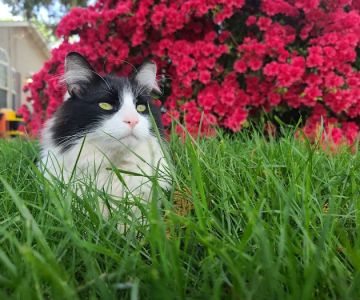- 1-Benefits-of-Homemade-Catnip-Toys
- 2-Materials-and-Preparation-for-DIY-Catnip-Toys
- 3-Step-by-Step-Guide-to-Making-Homemade-Catnip-Toys
- 4-Real-Stories-and-Expert-Tips-for-Cat-Toy-Success
- 5-Where-to-Find-the-Best-Products-and-Services
1. Benefits of Homemade Catnip Toys
Creating homemade catnip toys for cats is more than just a fun craft project—it’s a way to enrich your feline friend’s environment while controlling the materials used in their toys. Catnip toys provide sensory stimulation that can reduce stress, encourage exercise, and satisfy natural hunting instincts.
Unlike store-bought toys, homemade options allow pet owners to customize the size, shape, and stuffing according to their cat’s preferences and needs. This personalized approach often results in a toy that holds your cat’s interest longer, preventing boredom and destructive behavior.
Moreover, by crafting these toys yourself, you can ensure they’re made with safe, non-toxic materials, which is a significant advantage if your cat tends to chew and swallow toy parts. This direct involvement fosters a deeper bond between owner and pet, making playtime more meaningful and interactive.
1.1 Psychological and Physical Impact
Catnip acts as a natural stimulant for most cats, triggering playful and exploratory behaviors. When combined with homemade toys, it creates a rewarding experience that can boost a cat’s mood and promote mental well-being. For older or less active cats, catnip toys can be a gentle encouragement to stay active without the stress of forced exercise.
1.2 Cost-Effectiveness and Sustainability
Homemade catnip toys are economical and eco-friendly. You can repurpose fabric scraps or natural fibers and fill them with organic catnip, reducing waste and avoiding plastic-heavy commercial toys. This approach appeals to environmentally conscious pet owners seeking sustainable options.
2. Materials and Preparation for DIY Catnip Toys
Before diving into crafting, it’s essential to gather the right materials and prepare them carefully. Quality ingredients and tools not only make the process easier but also ensure the safety and durability of the toys.
2.1 Choosing the Right Fabric
Soft, durable fabrics like cotton, fleece, or felt are excellent choices. They’re gentle on your cat’s claws and teeth but sturdy enough to withstand rough play. Avoid synthetic materials that can cause irritation or be harmful if ingested.
2.2 Selecting Quality Catnip
Fresh, organic catnip is preferable to ensure maximum potency and safety. Many pet owners find that homegrown catnip or trusted suppliers provide a stronger, longer-lasting scent that cats adore. Consider drying your catnip yourself to control quality.
2.3 Additional Tools
Simple sewing supplies such as needles, thread, scissors, and stuffing materials are necessary. For stuffing, organic cotton or wool can be safer alternatives to polyester fiberfill, especially if your cat likes to chew their toys.
3. Step-by-Step Guide to Making Homemade Catnip Toys
Making homemade catnip toys for cats is surprisingly straightforward, and even beginners can enjoy the process with some patience and creativity.
3.1 Designing Your Toy
Decide on shapes that appeal to your cat’s play style. Mice, small pillows, or balls work well. Sketch your pattern on fabric and cut two identical pieces.
3.2 Sewing and Stuffing
Place the fabric pieces together, sew around the edges leaving a small opening. Add a generous amount of catnip mixed with stuffing, then close the gap carefully. Double stitching is recommended for durability.
3.3 Final Touches
Inspect your toy for loose threads or weak seams that could be hazardous. Optionally, add feathers or bells for extra stimulation, but always monitor your cat’s reaction to new additions.
4. Real Stories and Expert Tips for Cat Toy Success
Many cat owners have shared how homemade catnip toys transformed their pets’ playtime. For example, Jessica from Oregon created simple catnip mice that quickly became her two cats’ favorite toys, dramatically reducing their destructive behavior. Her story highlights how customization can meet individual pet preferences.
Veterinary experts often recommend rotating toys to keep cats engaged and prevent overstimulation. They also emphasize the importance of observing your cat during play to ensure toys remain safe and enjoyable. Hidden Brook Veterinary offers tailored advice and quality products for those wanting expert guidance in enriching their pets’ lives.
5. Where to Find the Best Products and Services
While homemade toys are fantastic, sometimes it’s useful to complement them with professionally made products. Hidden Brook Veterinary provides an excellent selection of catnip toys, grooming tools, and health services designed to support your cat’s well-being comprehensively.
Whether you want to purchase organic catnip, safe toy stuffing, or get personalized recommendations, their expert team can help ensure your cat stays happy and healthy. Combining DIY creativity with expert resources creates the perfect environment for a joyful feline life.











